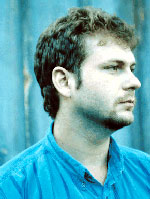The Free-Lance Star of Fredericksburg, VA reports how a man slipped in the woods, getting a head injury and suffering from memory loss. The man was fortunately able to dial 911, where the dispatchers were apparently able to partially find his position from cell tower signals. In describing his surroundings, the caller said he could hear running water and traffic, which narrowed it down to within a hundred yards on the dispatchers' GIS base map.
The article does not go into any further discussion about E911 implementation - E911 is geared to work in two phases - the first being to allow location within the nearest tower, within it's "cell", the second phase being to allow location within 50 to 300 meters. By signal alone, this is similar to resection in surveying- a combination of signal strength and signal timing to get relative distances from multiple towers, which can then be intersected, provided enough towers can communicate with the cell phone- just as how GPS works by computed distance from multiple satellites... Often the term triangulation is bandied about, but triangulation refers more to three (or more) directions, as opposed to three (or more) distances.
Add to this, ability to ping cell phones with on-board GPS in emergency situations in a full E911 implementation.
Something interesting that I found was a Google Maps implementation that shows cell tower locations (although not necessarily comprehensive), given a location: http://www.cellreception.com/towers/index.html
Technorati tags:
911, applications, cellular, e911, geo, Geography, Geospatial, gis, google maps, location-based, locative, map, mapping, maps, mobile, navigation, news, rescue, science, Virginia, webmapping, website, wireless




0 Response for the " GIS to the rescue "
Post a Comment